As a time-poor gardener I love these low maintenance garden ideas for a beautiful, fuss-free space
Without endless hours to dedicate to the upkeep of your space, these low maintenance garden ideas are perfect
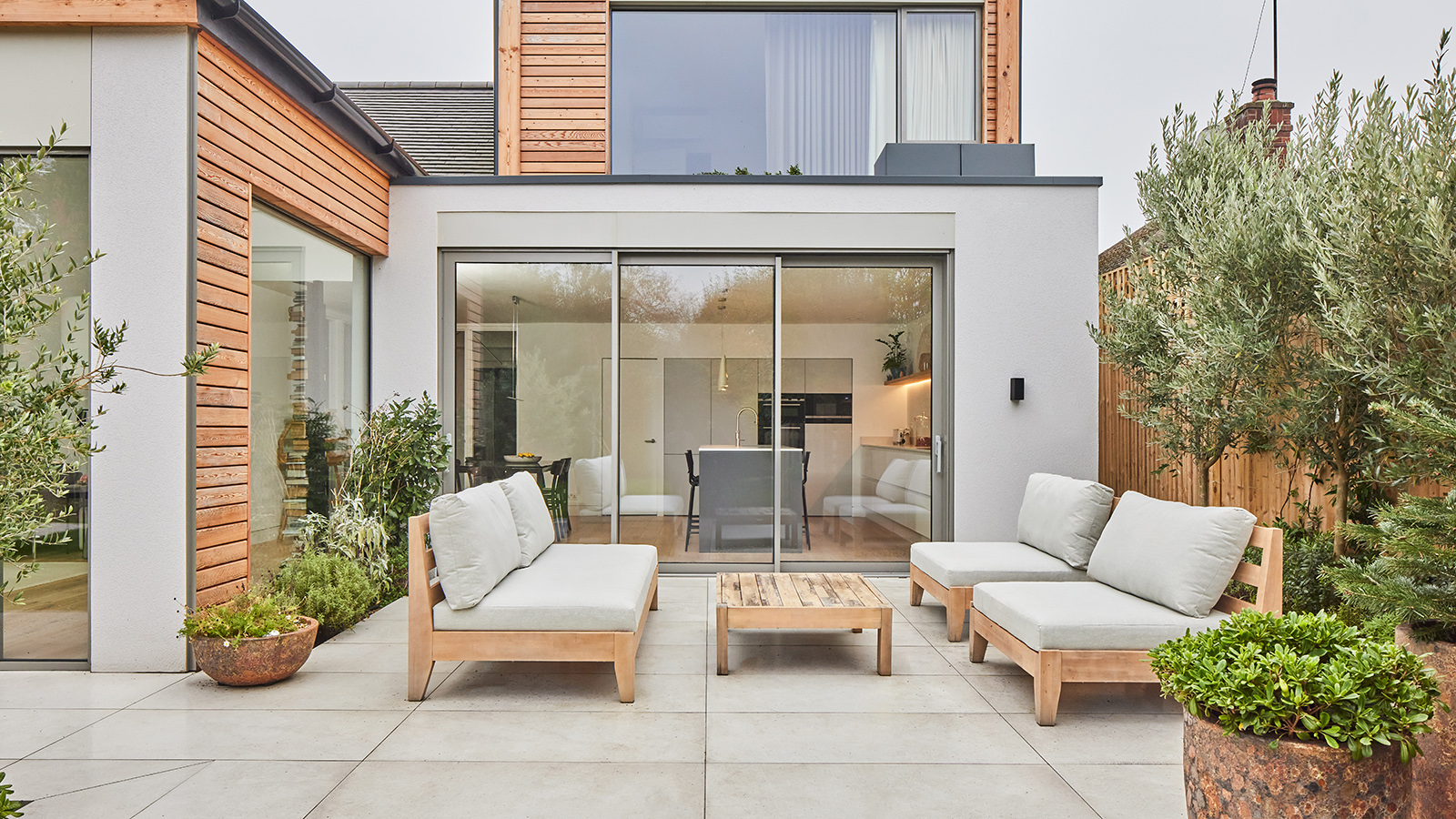
- 1. Consider ditching your lawn
- 2. Choose tough plants that will thrive all year
- 3. Introduce gravel in different areas
- 4. Suppress weeds in multiple ways
- 5. Choose durable patio materials
- 6. Cut out watering with smart systems
- 7. Bring planting to a comfortable level with raised beds
- 8. Plant up pots for a moveable feast
- 9. Make time-saving choices at the design stages
- 10. Keep your lawns low maintenance
We all want beautiful outdoor spaces, but the unfortunate truth is, many of us either don't have the time (or desire) to spend hours a week keeping our gardens in tip-top condition.
Enter the trend of low-maintenance garden ideas, which have long been seen as a magical solution to having a stunning garden without the work. Whilst it may not be that simple, and no garden can be completely without work, it can be achieved with planning and careful selection of hard-working plants and durable materials.
Follow these rules and you can create a stylish garden design packed with interest, without hours of back-breaking work and care.
1. Consider ditching your lawn
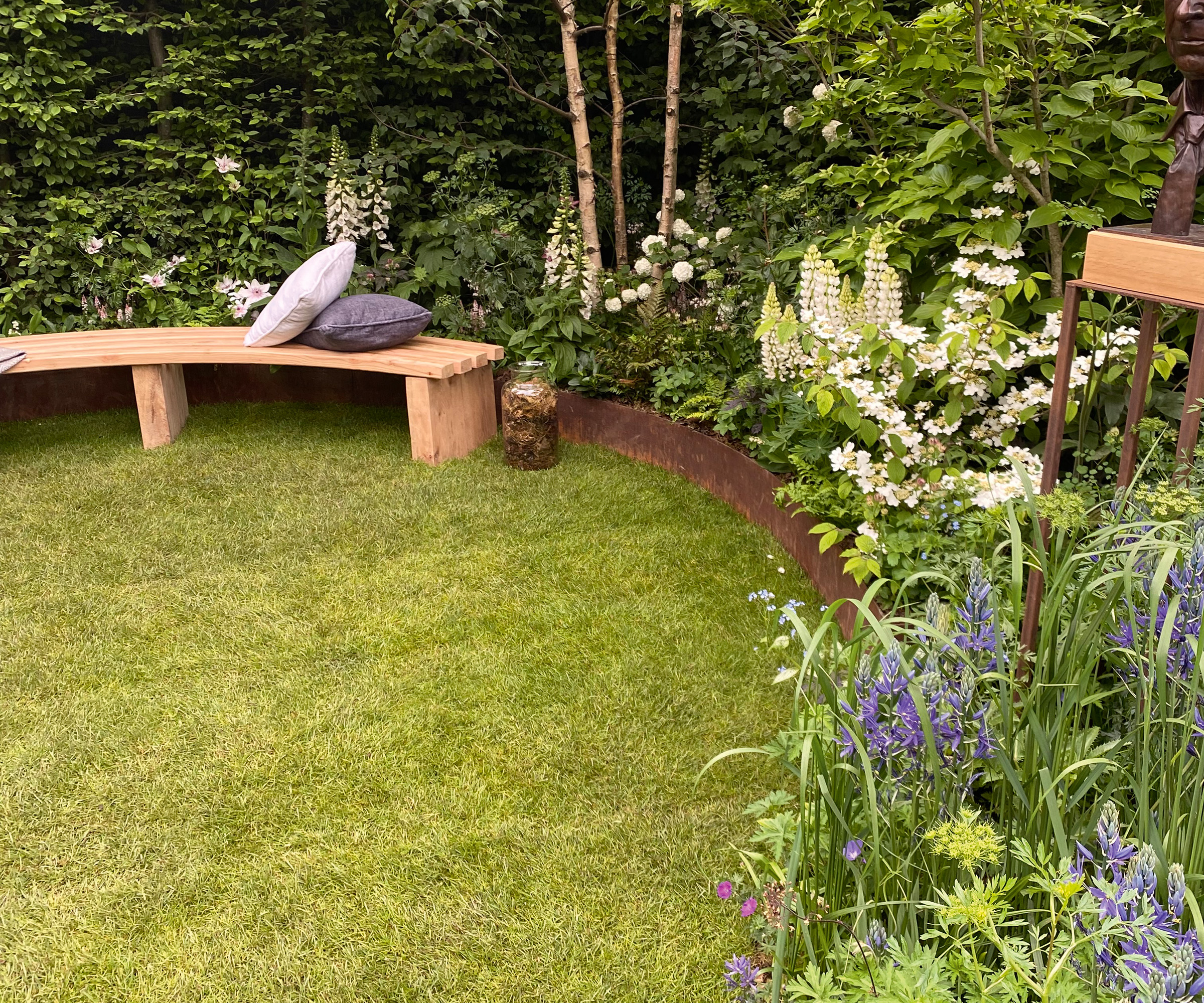
What a lot of novice gardeners don't realise is that lawns require a lot of maintenance. Weekly mows in the summer, annual aeration and scarifying and the constant battle fixing bare patches which appear.
If you decide to replace your lawn with hard landscaping, be sure you choose a permeable surface that allows rainwater to drain away safely. This is especially important in front gardens, where there are now laws that restrict how much of the space can be changed to hard landscaping (this is to ensure less surface water drains onto roads, potentially causing flooding).
Low maintenance gravel gardens offer attractive, permeable hard landscaping and can look wonderful with sun-loving plants in or around it. But be sure to use a weed-suppressing membrane underneath it to ensure upkeep is minimal.
There's also the option to choose a low-maintenance alternative to grass, such as growing a red creeping thyme lawn.
Bring your dream home to life with expert advice, how to guides and design inspiration. Sign up for our newsletter and get two free tickets to a Homebuilding & Renovating Show near you.
2. Choose tough plants that will thrive all year
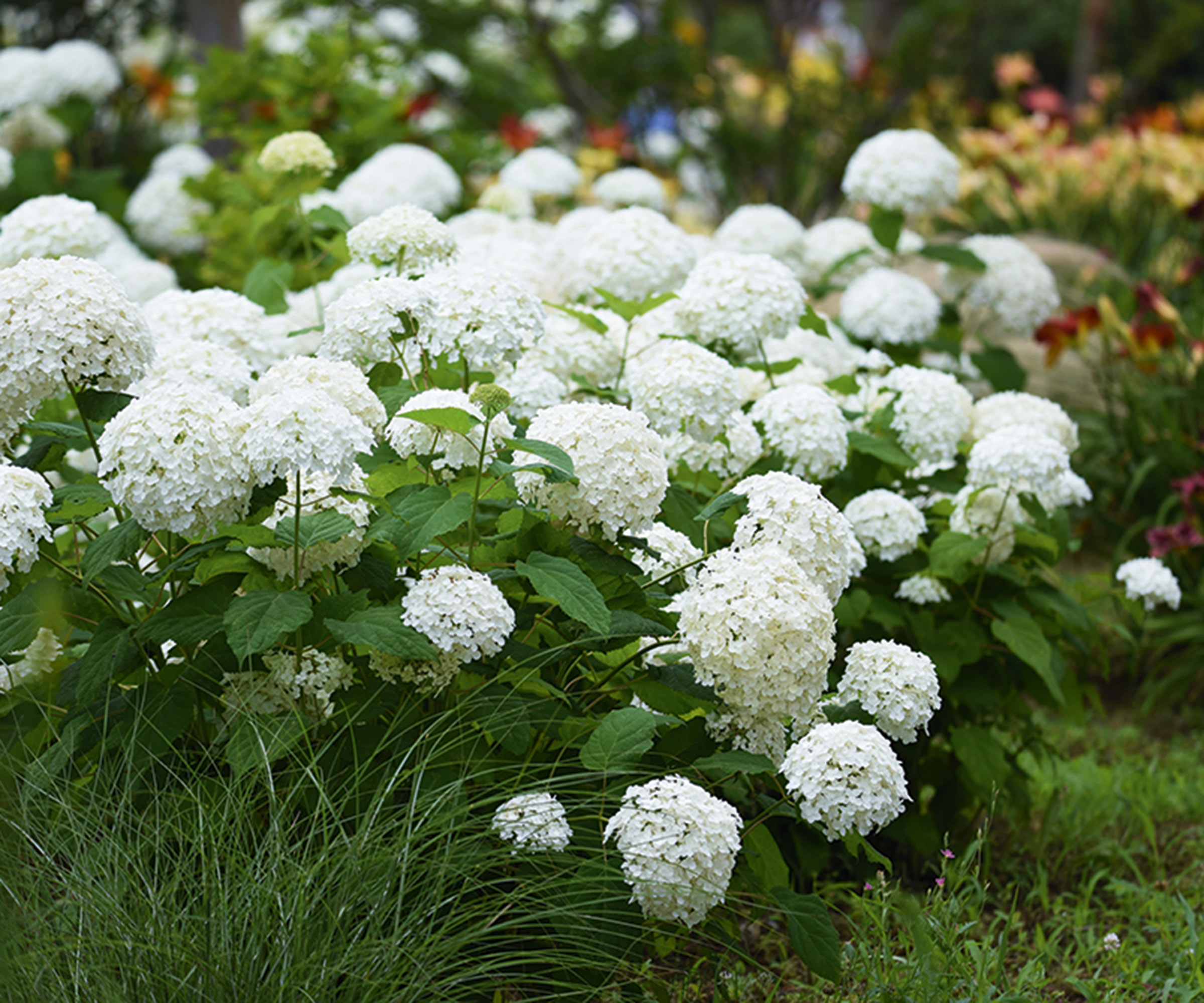
When researching or selecting key plants, consider those that offer more than one season of interest. These include shrubs which flower and fruit, or have interesting autumn foliage and perennials that do a job such as filling empty space with a long season of flowers which will come back year on year.
Evergreens can also be used and will give good winter cover, but they shed old leaves in June, which will need tidying up once a year.
Selecting the right plants for the right area will also save time, money and disappointment: shade lovers in the shade, for example, or plants for clay soils that suit heavy and damp areas.

Need more advice or inspiration for your project? Get two free tickets to the Homebuilding & Renovating Show.
3. Introduce gravel in different areas
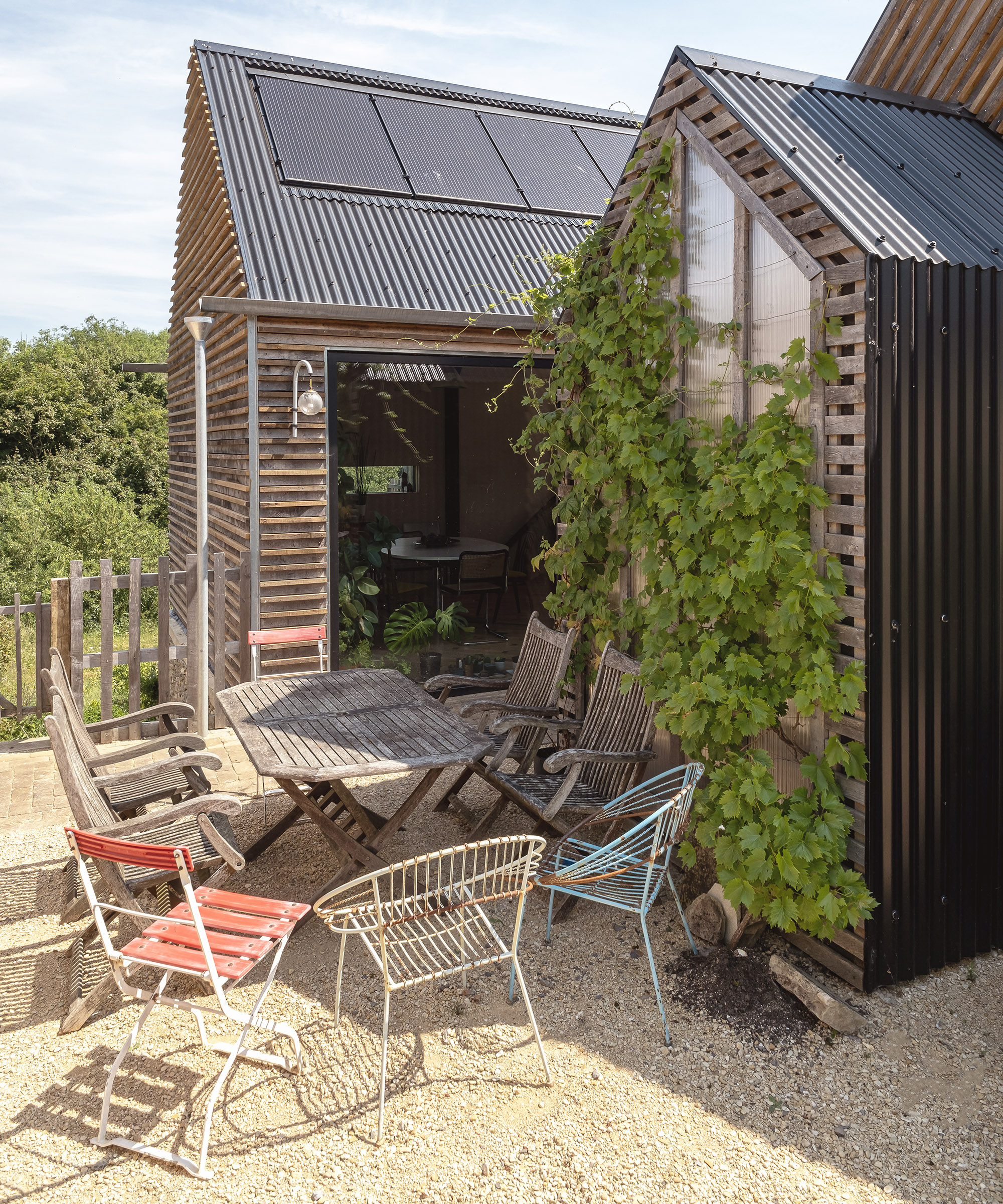
If you just want to bring gravel into sections of your garden, rather than replacing your whole lawn area consider the likes of lawn edging to help contain the stones and keep the garden tidy and contained.
"Garden walling can also be a great choice for containing gravel and flower beds, it’s just good to try and stay cohesive with your material colour schemes to tie the space together," says Grace Thornton, content specialist in domestic landscaping at Marshalls Plc.
"In landscaping, gravel is mostly ideal for garden pathways as it can be laid into any shape to weave around your space or the side of your home, using edging as mentioned above to keep it neat. It’s also good for near your property doors and windows, as the sound of steps on gravel can alert you of visitors and even unwanted intruders," Grace finishes.
4. Suppress weeds in multiple ways
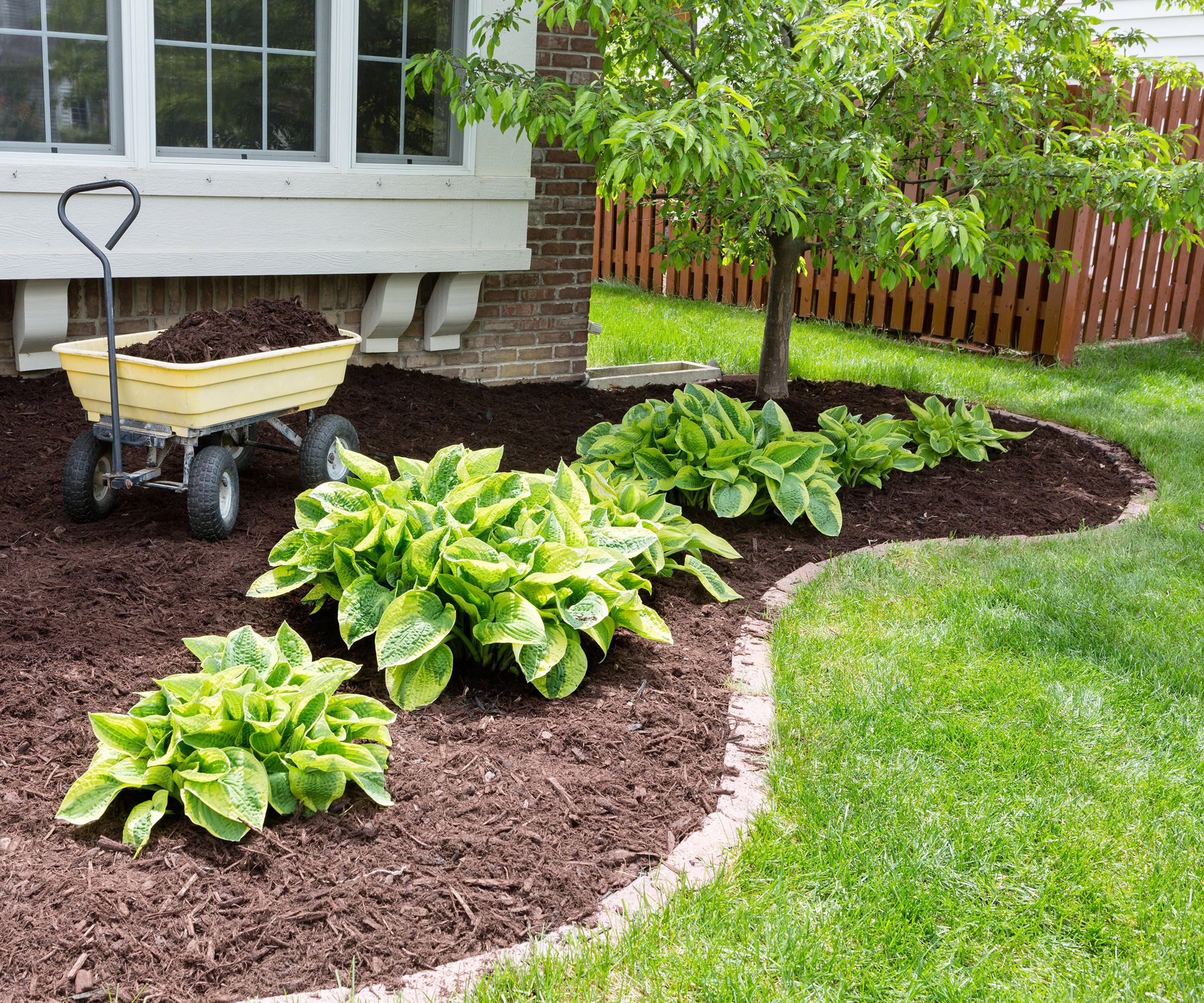
Getting rid of weeds can be one of the most soul-destroying of garden tasks, but there are two key ways to keep them at bay. One is mulching – laying a thick layer of well-rotted manure, garden compost, leaf mould or composted bark around your plants. As well as locking in moisture, a mulch also blocks the light, meaning that weeds won’t come to the surface.
The other key to a weed-free garden is dense planting – where there’s a plant, there won’t be a weed. So, pack every border and you will notice a big reduction in the time you need to spend your hands and knees.
Installing a ground covering geotextile like ANSIO Weed Membrane at Amazon and covering with a mulch will also reduce weeding and improve water retention, thus cutting down work.
What is a geotextile you ask? The most common example is weed control fabric. This is a great option if you're choosing organic gardening for your space, as it reduces the reliance on chemical weed killers too.
Look out for plants which are described as ground cover. They tend to root as they go and will create a thick mat of planting which will look good and stop weeds.
5. Choose durable patio materials
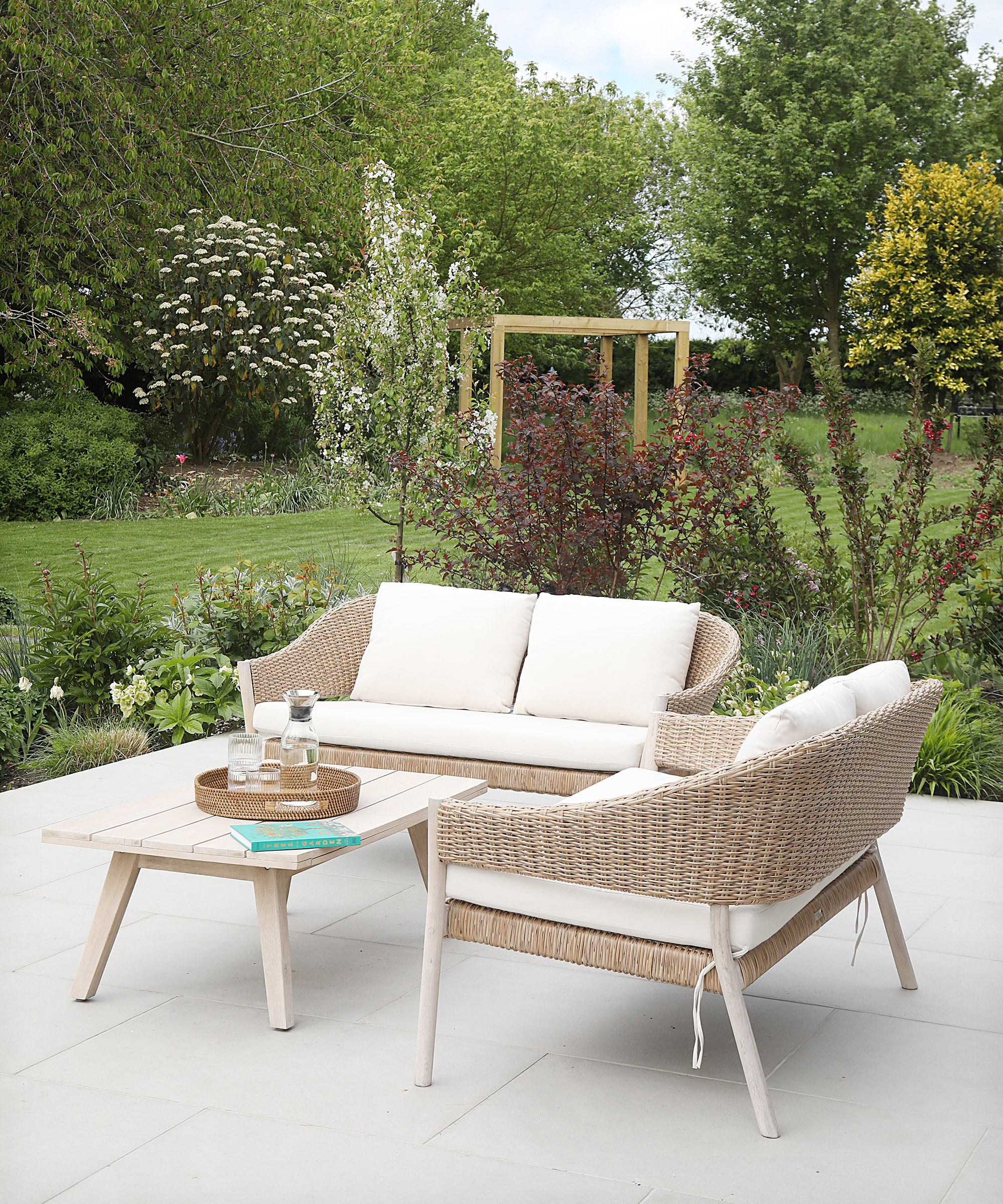
Think about using easy and durable materials, especially when choosing garden paving. Good quality porcelain paving, which is not oversized, is easy to care for and will last a very long time with minimal effort.
Porcelain doesn’t require sealing and offers a stain-resistant surface, which requires minimal maintenance, with low porosity and UV stable properties, which means that they will not stain or change colour.
Decking makes an attractive, hard-wearing surface for seating areas, and it’s also a good replacement for labour-intensive patches of lawn. If you can stretch your budget, opt for composite decking which won’t rot, warp, crack or splinter and a simple soap and water cleaning every now and again is all that’s needed to keep it looking like new for years.
6. Cut out watering with smart systems
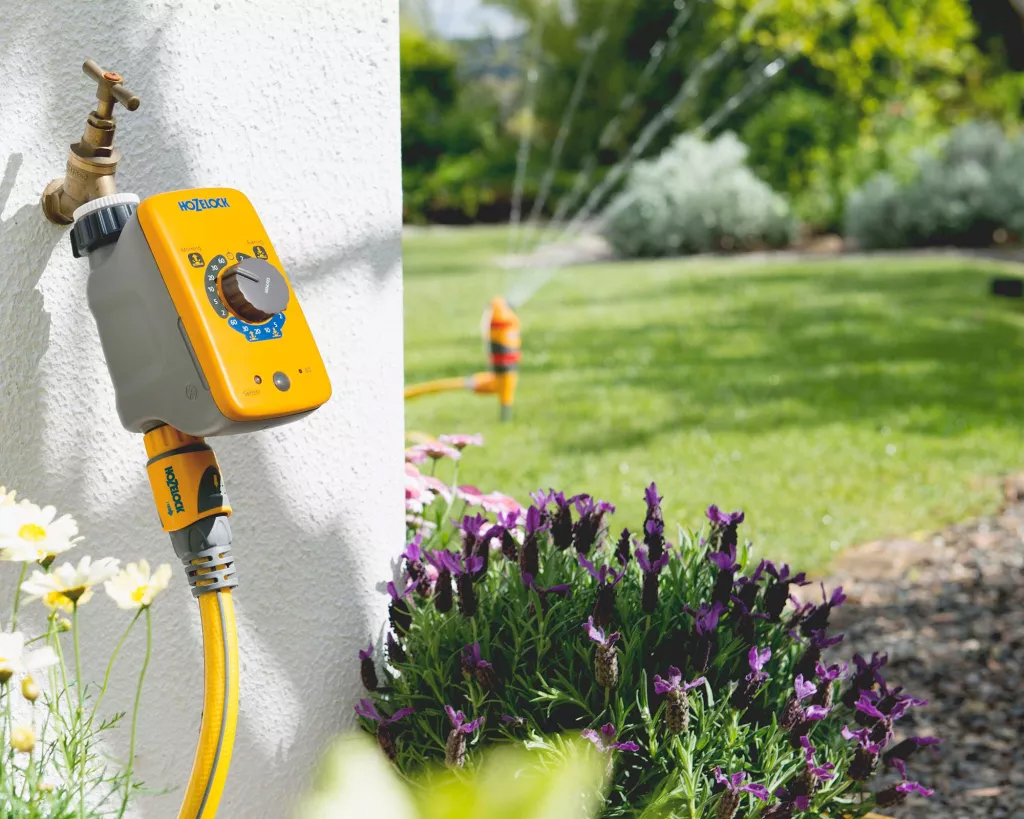
If you don't have an abundance of time to water plants when they require it, investing in a garden irrigation system is a smart idea.
Drip irrigation systems are the most effective, as they allow water to be released gradually, giving you more control over water delivery, and can be set up to deliver water directly to the roots.
Other systems include timer-based automatic watering kits, designed for watering pots, attached to a garden tap, as well as smart sprinkler systems. You can get irrigation systems for water butts too, making rainwater harvesting still an option for a low maintenance garden.
7. Bring planting to a comfortable level with raised beds

Raised garden beds are often a really sensible idea if you are planning a garden for the long term. We know that gardening can increase your lifespan but less bending over beds and more easy-to-maintain heights are not a bad thing either!
These beds and borders can be planted with a good range of shrubs and some hard-working perennials, which flower year after year. When fitted with an irrigation system, these beds will be largely maintenance-free if given a good feed and mulch at the beginning of the year.
8. Plant up pots for a moveable feast
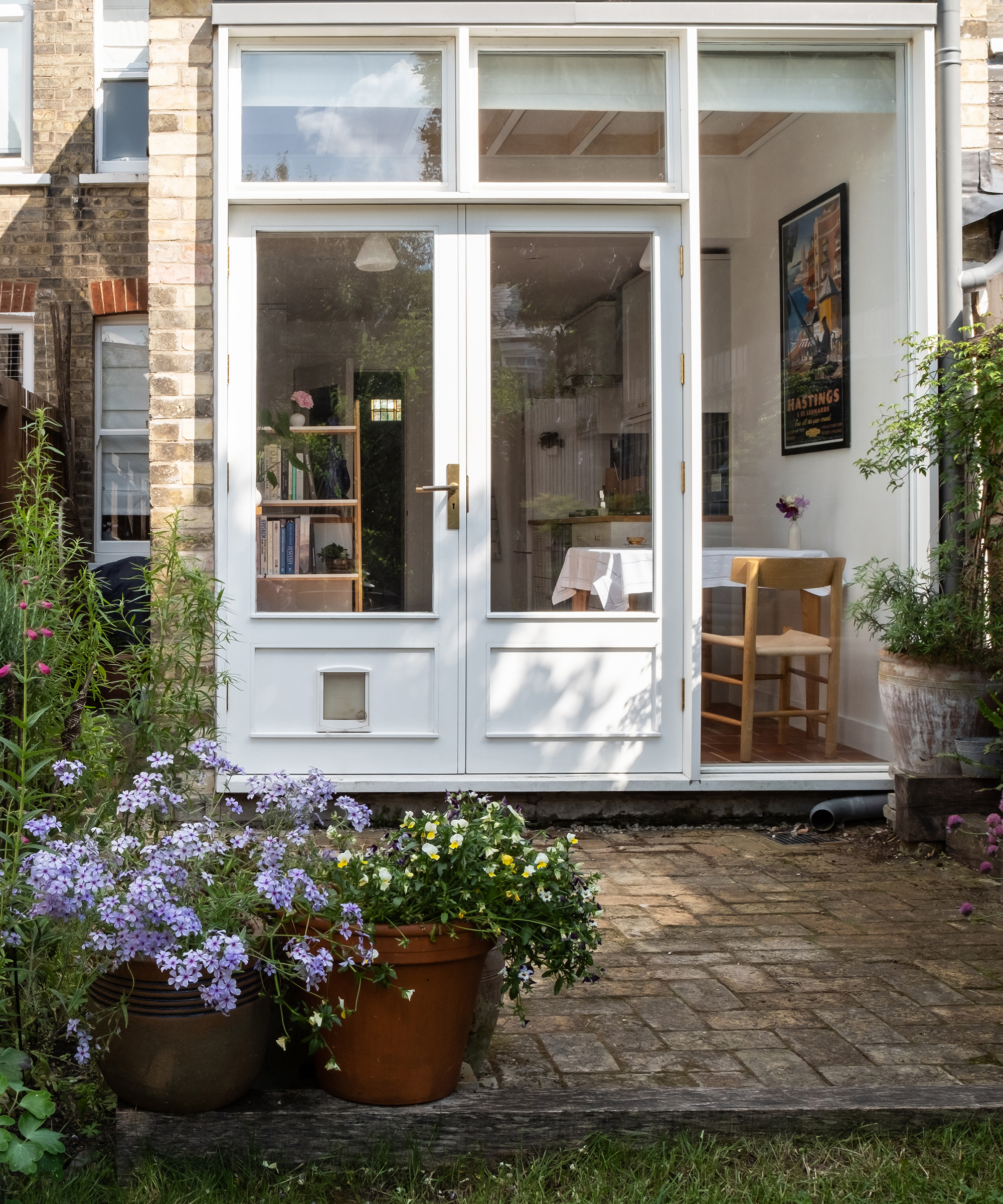
One of the best ways to add colour and interest to your garden is to go for a mix of pots and containers. Choose easy-to-care-for plants and all you’ll need to do is water and occasionally prune them. This idea works particularly well in small garden spaces too, and you could even try growing a few varieties of veg and fruit in pots on your patio.
Realistically, pots and containers will still require work unless you install a watering system. So if you can, stick to planting in the ground which will give the plants a chance of tapping into the water table and supporting themselves in the long run.
9. Make time-saving choices at the design stages
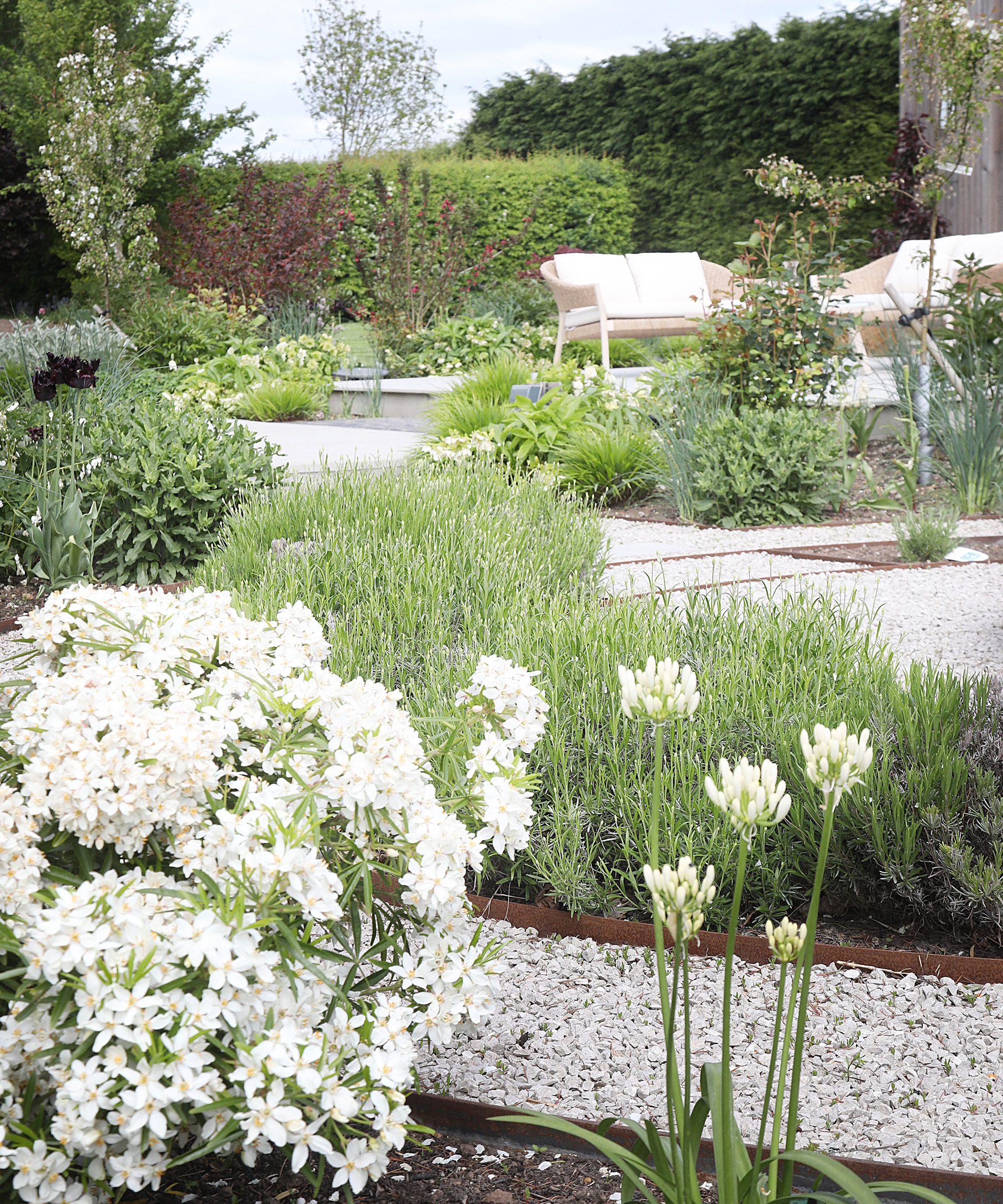
If you intend to use a landscape designer they can really help you maximise planting schemes to reduce your gardening work load, too. However, with a little time and research, you can achieve a low maintenance garden on your own.
Low maintenance doesn’t mean boring. It’s really about selecting durable, long-lasting materials that look after themselves or at least require minimal effort, combined with clever design: editing out awkward corners, small lawns and impossibly sized planting beds that are either too small for plants to grow well or so large you get lost trying to weed.
Remember, too, that you can edit and adjust a garden to suit your needs over time. The largest amount of time spent on ‘work’ in a garden is mowing the lawn and tending the borders, and these are two jobs that can be extremely intensive. Both can be cleverly reduced in terms of workload at any time in a garden’s life.
Well-designed gathering spaces like terraces for tables and chairs and nooks hidden away, for instance, will require little work to keep them going
10. Keep your lawns low maintenance
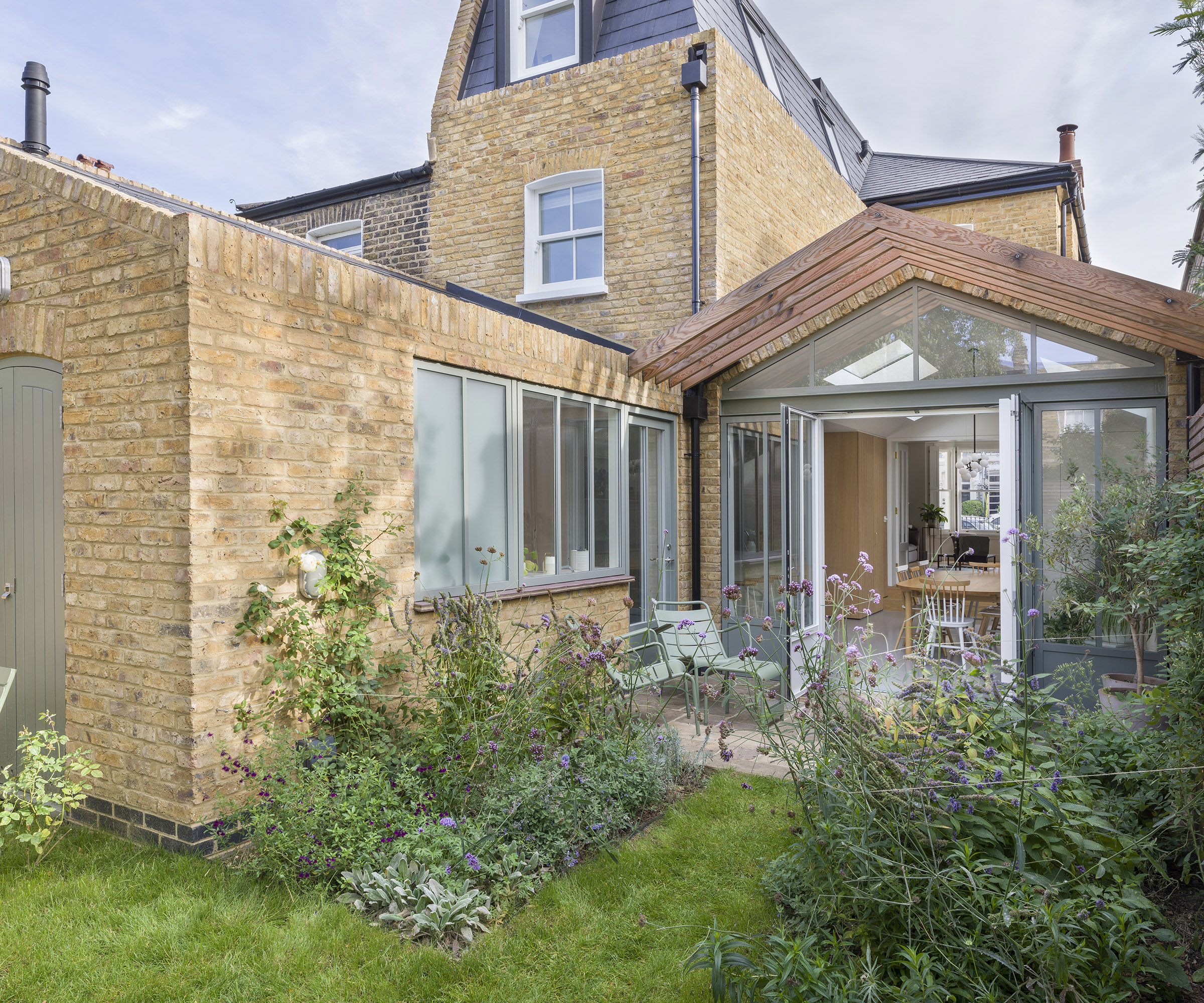
As previously mentioned, keeping a lawn looking good is arguably the most time-consuming of all garden jobs and a lot of people are opting for gravelled areas as an alternative.
But, you could consider having just a small area of short grass in the most formal area of the garden and leaving the rest to become wilder and more natural. All you then need to do is mow it just once a year at the end of summer.
If you do want to keep your whole lawn area regularly mown and you don’t mind splashing out a little, robot lawn mowers will do all the work for you. It can be programmed to head out at pre-set times, before taking itself back to its charging station when it’s finished – and you don’t even need to be at home at the time.
Installing lawn edging, for example, is a great way to define borders between lawn and beds, without need for regularly re-establishing it

Grace Thornton is a content Specialist in Domestic Landscaping at Marshalls Plc
If your garden is an important space for you to escape from the stresses of the day, then have a look at our sensory garden ideas and help turn your outdoor space into a mindful retreat.
Paul is an award-winning landscape designer. An experienced designer, his diverse range of work has included everything from small courtyards to large country gardens, as well as public spaces, both in the UK and internationally.
He studied at The Royal Botanic Garden Edinburgh, giving him the opportunity to learn about plants and plant habitats from some of the most knowledgeable and inspiring plantsmen in the world. He created his first show garden at Malvern Autumn Show in 2008, and has since created show gardens at the Chelsea Flower Show and Hampton Court, alongside being invited to exhibit internationally in United States, France, New Zealand, Japan and Australia. (In 2022, he designed The Brewin Dolphin Garden at the Chelsea Flower Show.)
Since 2015, he has been a RHS Gardens Judge and chaired judging at all of the RHS Flower Shows including RHS Chelsea Flower Show. He has also worked with Marks & Spencer and Bradstone to create garden products, and has written for The Telegraph and Homebuilding & Renovating magazine.
